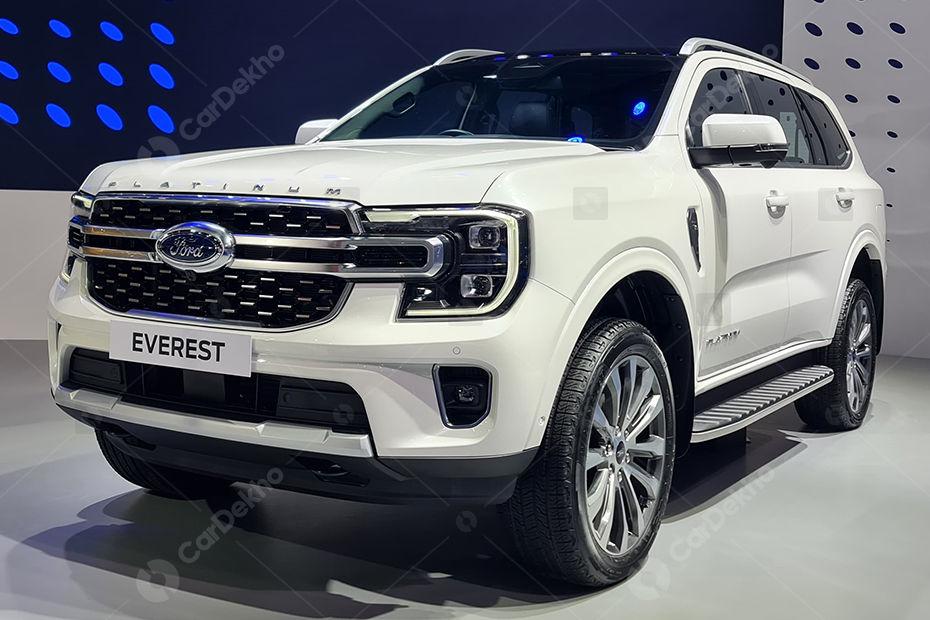Quick 5 With Ford's Chennai Plant Head
Modified On Jul 23, 2012 11:44 AM By Rahul
- Write a comment
CarDekho team visited the Ford's integrated manufacturing facility in Chennai and we speak to Tom, Executive Director, Manufacturing, Ford India and discuss about the top 5 facts about the plant, which we believe are worth sharing. So, we have some facts directly from the man who is managing the manufacturing show for Ford in India.
Q1) Tell us something about the production capacity of the plant? There has been an increment in the capacity. A bump up in the production of diesel engines.
Our integrated manufacturing facility here in Chennai has an installed capacity to produce 200,000 vehicles annually. Our engine production capacity at this plant has increased to 340,000 units per annum from 250,000 units annually with the expansion of our engine production capacity by 80,000 diesel engines each year on our fully flexible engine assembly line. This will help us meet growing consumer demands, both in India and across our export markets. We have also produced the 400,000th engine at the plant within four years of operations, which is a significant milestone in our powertrain operations here in Chennai.

These milestones are a renewal of our commitment in India, which will see it become a regional hub for low displacement engine production, and to consistently deliver high quality world class products. Our highly qualified workforce – almost 90% of our workforce hold diplomas – will continue to craft this success story for us in India. And with it their own individual success stories as well as they grow and aspire to become Ford owners themselves, thus making Henry Ford’s dream of turning his own factory workers into potential consumers, come true.
Q2) Also about the reduction in water consumption per engine. There has been a reduction in water usage by about 48 percent in the last five years.
There are two uses of water in the factory, one is personal for drinking purposes and the other is for the paint shop and other work related things. We have been working on reducing the usage of water at the paint shop and other facilities over the past few years so that now our plant here in Chennai has the lowest water consumption per engine anywhere in the Ford world.
Also, most of the water that is used today in the plant is recycled. Only about 10% of it goes as solid waste. But now we have determined a method to even extract the remaining 10% from this waste. This way we won’t waste any water. The system is being worked on, and in the next three to four months, it will be implemented as well.
Q3) What is with the vegetable based coolant oil? Is it used in other Ford plants as well?
In alignment with our brand promise of ‘Go Further’ in every aspect of our business and, as a good corporate citizen who takes cognizance of its responsibilities towards carbon footprint reduction, Ford worked closely with Castrol on this project to come up with a vegetable based coolant oil to replace the chemical based oil. We will continue to work with our partners to come up with materials that are more environment friendly and will therefore help reduce our carbon footprint further.
Q 4) Being 13 years old, how do you make the plant ready for the future?
A key aspect of transforming our business operations in India is the positioning of our Chennai plant as a centre of excellence across the Asia, Pacific and Africa region. When the Chennai plant began in November 1999, we started with just one robot. Now we have 66 robots in the paint shop alone. We also became the first Ford manufacturing facility to get a fully flexible engine assembly line where we can manufacture petrol and diesel engines on the same assembly line. This gives us tremendous flexibility in adjusting to rising consumer demand, both domestic and in our export markets. In addition, we can build Ford vehicles in petrol and diesel variants and in right hand drive or left hand drive versions, which again helps us cater to domestic demand as well the diverse needs of our diverse export markets. We also support operations in other plants in the region. It has been a story of consistent growth in knowledge, production capabilities and implementation of best practices that is helping us build a strong business and develop great products.
Q5) With the Sanand plant coming up, will the Chennai plant become the head plant?
Our two integrated manufacturing facilities – the one here in Chennai and the upcoming facility in Sanand – will complement each other and play a mutually supportive role to ensure that we meet supply requirements that match growing consumer demands, both domestic and in our export markets.
For Ford this isn’t new, as there are multiple plants in USA, across Europe and even Mexico. In fact with this focus on growth in the APA region Ford has commissioned 7 new plants, which are under construction, in the region, which is unprecedented. The establishment of our second integrated manufacturing facility in Sanand is among them and is in alignment with our aggressive expansion and long term growth plans for our operations in the APA region as well as in India. With 60-70% of growth over the next few years coming in from the APA region and India playing a significant role in this tremendous growth story, we want to see India become a hub for automotive exports and our operations here in India, both in Chennai and Sanand, will play a lead role in that.















